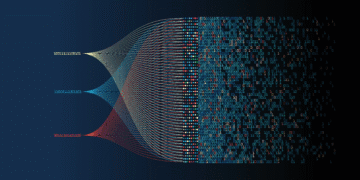Major credit card companies are deploying generative artificial intelligence to dramatically improve fraud detection capabilities, with Mastercard reporting it has doubled its detection rate for compromised cards before they can be used fraudulently. The breakthrough comes as global payment card fraud losses reached $33.83 billion in 2023 and are projected to climb significantly higher.
Mastercard’s new system combines generative AI with graph technology to scan transaction data across billions of cards and millions of merchants at faster rates than previously imaginable. The technology enables the company to predict full card details from partially visible numbers that fraudsters sell on illegal websites.
“Until now fraudsters may have thought they were operating in obscurity, seeking to launder the card details of millions of unsuspecting victims,” said Johan Gerber at Mastercard. “Thanks to our world-leading cyber technology we can now piece together the jigsaw.”
The AI-powered approach addresses a rapidly growing problem. Industry research firm Nilson Report predicts fraud losses will total $403.88 billion worldwide over the next decade, with credit card fraud losses in the United States alone projected to eclipse $12.5 billion by the end of 2025.
Beyond detection improvements, the technology delivers measurable business benefits. Mastercard’s system reduces false positives during fraud detection by up to 200% and increases the speed of identifying at-risk merchants by 300%.
The broader financial industry is embracing AI-powered fraud prevention. A 2025 industry report revealed that 90% of financial institutions are using AI-powered solutions to combat emerging fraud, with 83% of anti-fraud professionals anticipating adding generative AI to their programs within two years.
However, the technology presents a double-edged sword. More than 50% of fraud now involves the use of artificial intelligence, as criminals leverage generative AI to create sophisticated deepfakes and automated phishing campaigns.
Deloitte estimates that generative AI-driven fraud losses could exceed $40 billion by 2027 in the United States alone. The firm warns that AI-powered malware can dynamically adapt and learn from its environment to refine attacks in real time.
NVIDIA recently launched an AI Blueprint for financial fraud detection that helps institutions identify subtle patterns and anomalies in transaction data. Financial losses from worldwide credit card transaction fraud are projected to reach more than $403 billion over the next decade.
The arms race between fraudsters and financial institutions continues to intensify as both sides harness increasingly sophisticated AI technologies. Industry experts emphasize that human oversight remains essential to ensure responsible AI deployment in fraud prevention systems.













